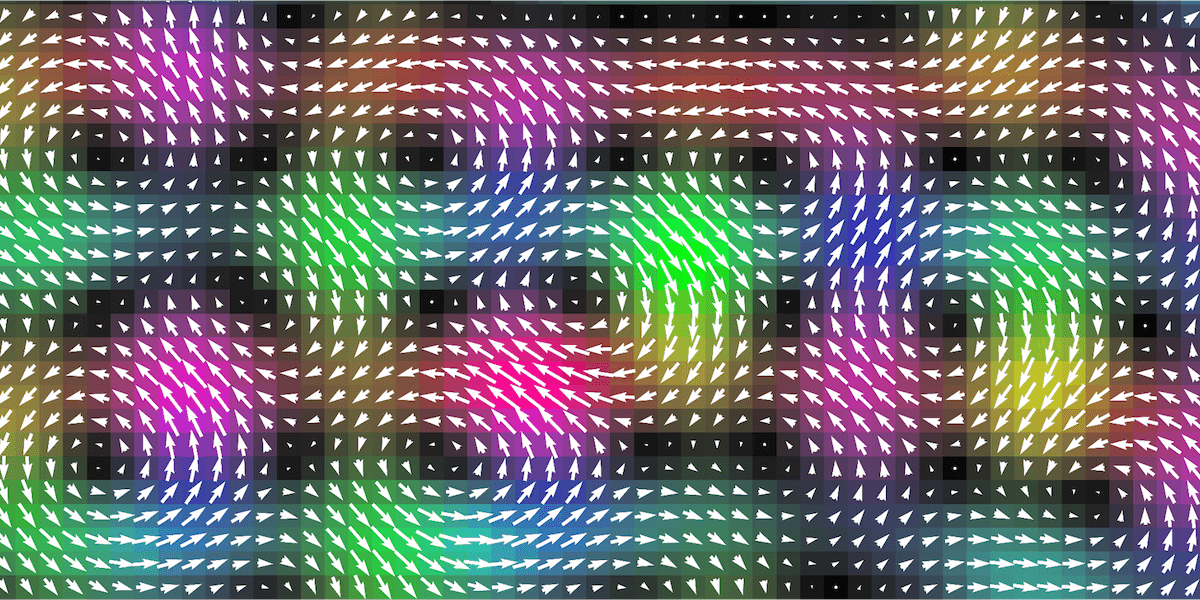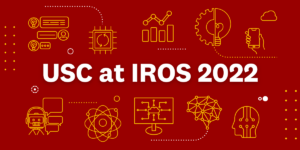
Yu-Tsun Shao is studying swirling, atomic-scale particles that can enable future materials. Image/Yu-Tsun Shao
Swirling donuts. That’s what Yu-Tsun Shao thinks about when describing his atomic-scale materials research.
Shao, an assistant professor in the Mork Family Department of Chemical Engineering and Materials Science, aims to understand the atomic-scale behavior of donut-shaped particles that can enable low-power electronics. He has uncovered how strain and heat can shift the shape of the donut particle to give it powerful new energy-efficient and stabilizing properties. His latest work was recently published in Nature Communications.
Shao is working with skyrmions — nanometer-sized objects that resemble donut-like swirling vortexes. The skyrmions have electric polarization in the form of positive or negative charges (dipoles) that move in a continuous direction up and out from the center ‘donut hole” and down and in from the outer edge of the particle.

Assistant Professor of Chemical Engineering and Materials Science Yu-Tsun Shao. Image/Yu-Tsun Shao.
“The skyrmions I look at in particular, are nano-sized donuts with extra swirls. Imagine these donuts covered in little arrowheads, which are the electric dipoles with a negative-positive charge,” Shao said. “The skyrmion is topologically protected, meaning it has the same characteristic property, the topological charge, under continuous deformation. You can stretch it and bend it. It all retains the same topological property.”
Shao said that understanding these particles is of particular interest when it comes to materials for computational hardware. Computers require electricity to create the bits and bytes of information they need to function.
“So, you have a gate voltage you turn on and off. That’s how the computer creates zeros and ones in bits of information. But in the case of electric dipoles or magnetic spin skyrmions, you don’t need to supply energy to retain that bit of information. It is non-volatile and topologically protected.”
Shao then takes those particles and manipulates them into what he describes as half-donut-shaped particles known as merons that are not fully enclosed by an outer shell. Merons can have their topological properties stretched and changed in different ways.
“We take a skyrmion at room temperature,” Shao said. “When we heat it up and also apply some compressive strain, it becomes half a donut. In this way the properties, both the topological charge and their handedness, have changed and that’s what we define as a topological phase transition. Skyrmions swirl in one direction, but merons swirl in multiple directions. I think that’s pretty cool.”
Shao’s atomic-scale research will soon harness a powerful, new two-story high electron microscope that will find its home in the USC Michelson Center for Convergent Bioscience. The scope will be focused down to the sub-angstrom scale and be able to collect massive amounts of data about the atoms in materials, which Shao will mine to construct detailed images. It’s something he likens to putting on a new pair of glasses to bring the tiniest details into clear focus.

Donut shaped skyrmions (left) show polarization swirls in one direction, while half-donut-shaped merons (right) are able to swirl in multiple directions. Image/Yu-Tsun Shao.
Shao said he is looking forward to collaborating with other Mork Department researchers who synthesize quantum materials by solving the puzzle of the atomic-scale structural building blocks that will enable their work.
“The atomic structures for plenty of quantum materials are not fully understood yet, and I think that naturally fits my role,” Shao said.
Shao referenced a famous 1959 talk at Caltech by physicist Richard P. Feynman, “There’s Plenty of Room at the Bottom,” which foreshadowed how future materials could be created through the manipulation of atoms.
“If you can locate every atom, at every three-dimensional position, you can know about any property of this material. If you can manipulate the atom into anything you want, you can create any material,” Shao said.
Published on April 19th, 2023
Last updated on November 30th, 2023











